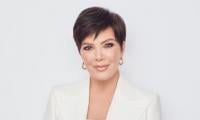Nothing can be duller than listening to an economist or other policy expert pontificate endlessly on such metrics as gross domestic product, stock market prices, employment, and consumer confidence. Most of all they talk about GDP: Rising GDP is good; falling GDP is bad. But as a measure of economic activity, GDP is what it says it is: a gross number. It doesn’t measure how money and wealth circulates through a system, what use it is put to, how the rewards of its use are distributed. It just counts how much comes out of the spigot at the end of the pipe. This completely avoids taking into account what may be the most important indicator of economic health: equality.
Epidemiological studies demonstrate that equality is essential to a host of physical, mental, and social health outcomes. Societies that are more equal have lower rates of infant mortality, homicide, imprisonment, teenage motherhood, and other indicators of economic dysfunction. People in those countries also have higher life expectancies, levels of literacy, math proficiency, social trust, social mobility, and other positive signs of a healthy society.
This research suggests that for most countries economic performance on equality is far more important to the well-being of their citizens than GDP growth. Indeed, in our currently overstressed world, in which humans are consuming at a rate 1.7 times what Earth can sustain, our real need is for less consumption and more equity. For the well-being of most everyone – including the rich – equality is more important than growth.
So how is the global economy doing on equality? An international team of over 100 economists from more than 70 countries recently issued the 2018 World Inequality Report on global income and wealth distribution from 1980 to 2016.
The overall distribution and trends are alarming.
Only 9 percent of total global income in 2016 went to those who need it most – the poorest 50 percent of the world’s population, composed of 3.8 billion people. Their share of the total growth in income was just half the increase enjoyed by the richest 1 percent. And among the 1 percent, half of their total increase was concentrated in the richest tenth of that elite tier.
In other words, the more you had, the more you got. Between 1980 and 2016, the global average rate of individual income growth was 60 percent. But that average includes the fact that the richest 10 percent of the world’s people gleaned an average 70 percent increase, and the top 1 percent saw their income grow by an average of 101 percent. But even that significantly overstates the income growth experienced by the “lower” end of those 1 percenters, because it includes the gains of the top 0.1 percent, who saw their incomes grow by 133 percent, the top 0.01 percent (185 percent increase), and the top 0.001 percent, whose incomes increased a whopping 235 percent.
Comparing average increases in income obscures the implications of these numbers for inequality. If you are among the poorest of the poor living on an income of a dollar a day, a 60 percent increase gets you an extra 60 cents a day, but a hedge fund CEO with an annual pay, including bonuses of $100 million, would get an extra $60 million per year. If everyone got the same percentage increase each year (and they do not), inequality’s ills only grow. Given current income gaps and the actual rates of salary increases, which skew toward the richest of the rich, inequality is growing at a blinding rate.
As long as GDP grows faster than population, total income also rises. In a pure market economy, if production rises, it is only in response to the demand of those who get the extra income.
This article has been excerpted from: ‘When Economic Growth Indicates Failure.’
Courtesy: Commondreams.org
Currently, a staggering 60 per cent of government revenue is being wasted on interest payments
It seems that Beijing’s goodwill, stronger financial stature, principle of non-interference in domestic affairs and...
Following the onset of post-pandemic inflation in 2021, economists swiftly diverged into two camps
Discrimination in education has been a persistent issue throughout history
Punjab, with its population of over 120 million, stands at a critical juncture in its history
Events leading up to the upcoming protests and beyond are a powerful reminder of Pakistan’s once relatively...







